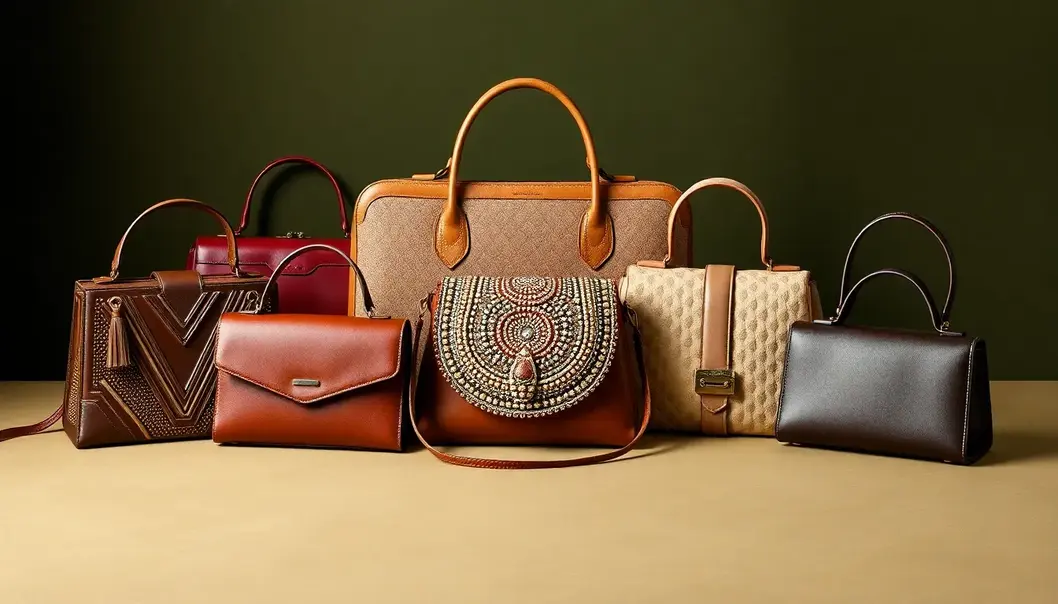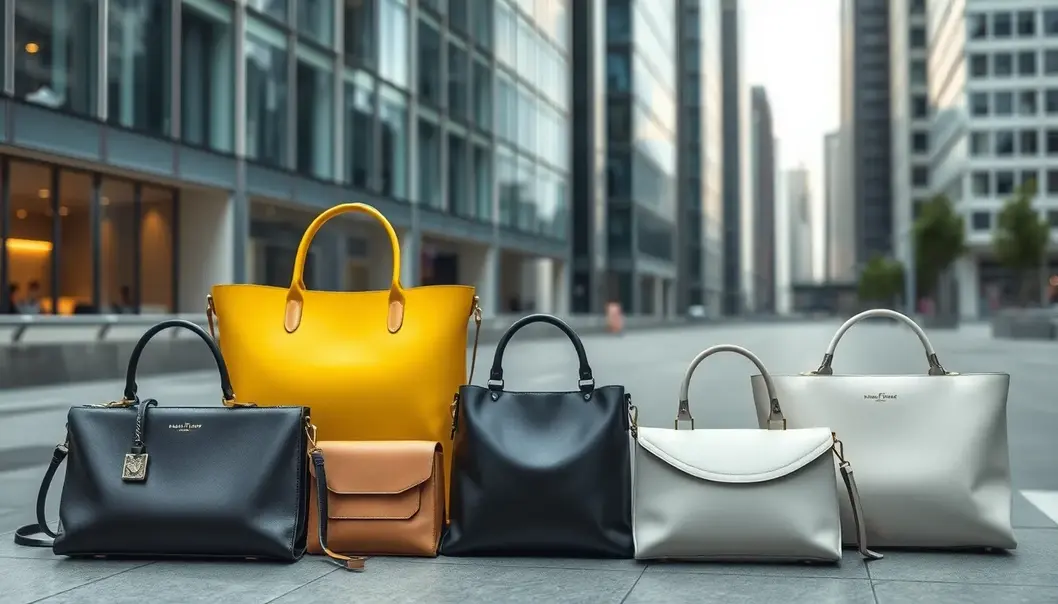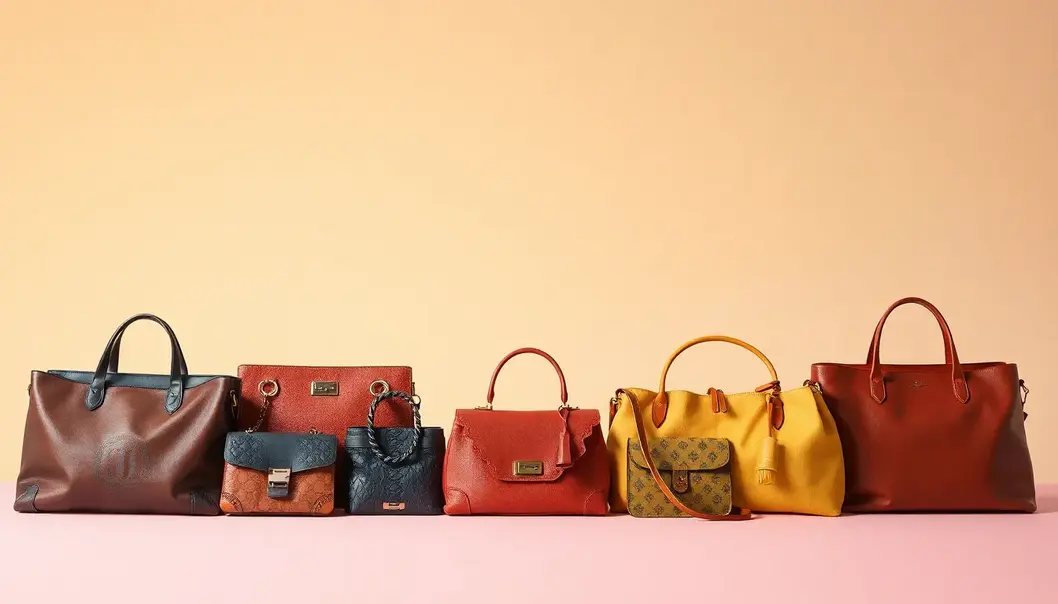Handbags have become more than just accessories; they’re statements, symbols, and style icons. From vintage vinings to ultra-modern shapes, these bags have carried not just our things but also cultural and personal histories. What started as merely functional items have evolved into Dr. Martens of self-expression. As we explore the journey of handbags from the past to the present, you’ll see how each era has put its unique stamp on this essential accessory. Whether you’re a vintage lover or a future trendsetter, there’s a handbag story here just for you.
Timeless Elegance: Retro Handbag Design

The early 1900s marked the beginning of a shift in handbag design, as styles evolved from mere functional accessories to symbols of personal expression and status. This era of transformation saw handbags reflecting the social and artistic revolutions of the time, particularly through movements like Art Deco, which emphasized geometric shapes, symmetry, and the use of luxurious materials.
Art Deco emerged in the 1920s and was characterized by bold, opulent designs that often incorporated exotic materials. This glamorous style was a response to the ornate, floral patterns that had dominated before, offering a modern alternative that mirrored the technological advancements and cultural progress of society. Art Deco handbags typically featured sleek lines and intricate embellishments, making them coveted pieces that transcended their practical origins.
During the same period, beaded bags came into vogue, capturing the essence of the Roaring Twenties. These intricate, hand-crafted accessories were often adorned with glass beads and sequins, reflecting the era’s love for all things shiny and elegant. These bags were more than just evening accessories; they were small works of art that added a touch of sophistication and sparkle to any outfit.
The influence of Hollywood glamour cannot be understated in the evolution of handbag design during the early to mid-20th century. The silver screen’s leading ladies carried elegant clutches and structured bags that became icons in their own right, often setting trends that women around the world would emulate. With the rise of starlets as fashion icons, handbags began to embody the allure and sophistication associated with the Hollywood lifestyle.
The 1950s and 1960s continued this trajectory with a focus on practicality that didn’t compromise style. New materials like plastic and Plexiglas were embraced, allowing for innovation in color and form. Style icons of the time further popularized brand-new silhouettes, such as the clutch and the tote, making these styles quintessential to the era while paving the way for today’s diverse designs.
Despite the decades that have passed since these styles first appeared, their influence is still strongly felt in modern fashion. Designers today often take cues from these classic eras, incorporating retro elements into contemporary creations, satisfying a nostalgic yearning for vintage-inspired elegance. The timeless qualities of these designs—such as their attention to craftsmanship, opulent details, and the balance of form and function—continue to resonate with both designers and consumers.
In exploring the journey of handbag design from the 1900s to the 1960s, it becomes evident how these accessories evolved to become cherished expressions of style and individuality, much more than mere pragmatic appendages. As we delve into modern trends, these retro inspirations serve as a testament to the everlasting allure of an impeccably designed handbag.
Modern Marvels: Today and Tomorrow’s Handbag Trends

The handbag landscape from the 1970s to today has been marked by a dynamic evolution, reflecting broader societal shifts and technological advances. In the 1970s, handbags began to embrace individuality, moving away from the uniformity of earlier eras. This period saw the rise of bold designs and bright colors, reflecting the exuberant spirit of the times.
As the decades progressed, sustainability emerged as a critical concern in handbag design. Designers have increasingly turned to eco-friendly materials, such as recycled plastics and plant-based alternatives, to meet the demands of environmentally conscious consumers. This shift is not merely a fleeting trend but a testament to the growing awareness and responsibility within the fashion industry. The push for sustainable practices has led to innovative material developments, creating bags that are both kind to the planet and visually appealing.
The integration of technology has also marked a significant transformation in handbag design. Today’s handbags often feature tech-savvy elements, such as built-in phone chargers, GPS locators, and RFID-blocking compartments. These features cater to the modern need for connectivity and security, blurring the lines between fashion and functionality. Designers skillfully blend these high-tech features with aesthetic appeal, ensuring that the practical aspects enhance rather than detract from the overall design.
In terms of style, recent trends highlight a fascination with both the miniature and the oversized. Tiny bags have captured the imagination of younger generations, often serving more as decorative accessories than functional carryalls. Despite their size, these bags encapsulate a playful experimentation with form and proportion, challenging traditional notions of utility.
Conversely, oversized bags have also seen a resurgence, catering to those who favor practicality without compromising on style. These bags often incorporate multiple compartments and detachable components, offering versatility to adapt to the diverse needs of modern life.
Looking ahead, the future of handbag design appears poised to explore new frontiers, possibly incorporating even more aspects of smart technology and sustainable innovation. Designers may draw inspiration from emerging technologies like augmented reality, offering interactive features that could revolutionize user experience. The ongoing quest for novel materials could see the utilization of bioengineered fabrics, pushing the envelope of traditional design frameworks.
Future trends may also continue to blur the boundaries between genders, with handbags becoming more unisex in their appeal and functionality. As societal norms evolve, the demand for inclusive design grows, reflecting a cultural shift towards greater equality and representation in fashion.
Ultimately, the trajectory of handbag design since the 1970s tells a story of adaptation and innovation. It is a journey marked by the continued interplay of technology, sustainability, and an ever-evolving sense of style, promising an exciting future for both designers and consumers.
Final words
From the elegance of classic designs to the cutting-edge innovation of today’s trends, handbags have come a long way. They’ve become canvases for personal expression, diverse functionality, and cultural reflection. When you pick a handbag, you’re not just choosing a style; you’re embracing a piece of history and a vision for the future. What story will your next handbag tell?
Ready to find your next statement bag? Explore our curated collection that perfectly blends timeless designs with modern flair today!
Learn more: https://www.fashionforwardhandbags.com/shop
About us
Fashion Forward Handbags offers a curated selection of stylish and innovative handbags, combining timeless elegance with cutting-edge design. Discover a wide range of eco-friendly options, tech-integrated bags, and unique fashion statements tailored for trendsetters and style enthusiasts.



